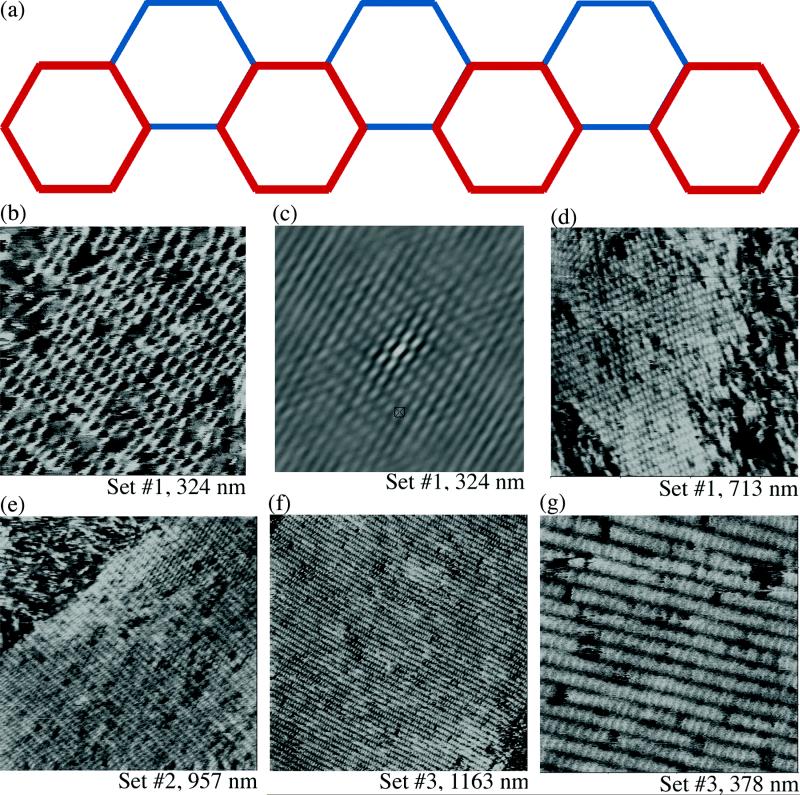Figure 4.
Two dimensional arrays obtained from six helix bundle motifs. The three different paired sets of helical sticky ends have been blunted to produce a 2D array. A schematic where the vertices of hexagons represent helix axes is shown in (a); the red layer is closer to the reader than the blue layer. From the first set, a zoom is shown in panel (b), its autocorrelation function is shown in (c), and a long view is shown in (d). The zoom in (b) shows how the individual 6HB motifs form a corrugated arrangement. Note that the autocorrelation function indicates 2D order. A long view of each of the other two directions is shown in (e) and (f). Neither of their autocorrelation functions indicates good order in more than one direction. (g) shows that the image in (f) has clear vacancies, but that they do not appear to destroy the periodicity of the array.

